
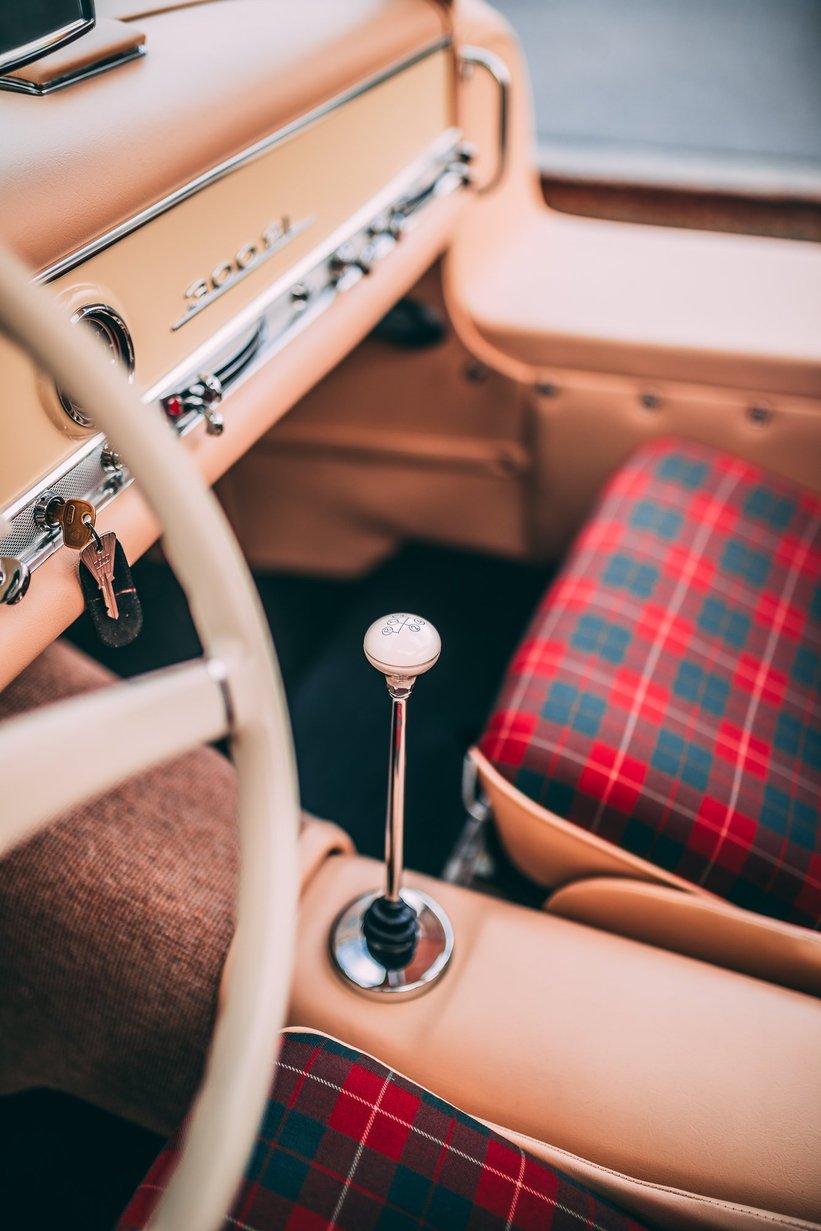
“I always want the newest, best and fastest car,” Charles Robin A. Grant was reported to have once said. The wealthy British industrialist was the original owner of this spectacular Mercedes-Benz 300SL, chassis #6500015. And as you’d expect of a man with the wherewithal to splash out on such automotive exotica, Mr Grant went to town with his ‘Gullwing’ order.
While a whopping 39 per cent of 300SL owners specified their cars in standard metallic silver, Grant was more adventurous, plumping for Elfenbein, or Elephant Ivory. The elegant exterior hue was complemented by cream vinyl and red tartan wool inside, while beneath the flat, graceful bonnet resided the uprated ‘NSL’ high-performance engine, a desirable option that featured on just four per cent of all the ‘Gullwings’ produced.

Arguably the most significant box ticked on the order form, however, was the lightweight alloy body. Shaving a not insignificant 80kg, the aluminium bodies were handcrafted in Mercedes’ racing department in Untertürkheim, away from Sindelfingen where the steel cars were built. Miraculously, only 29 alloy bodied ‘Gullwings’ were built. It’s ironic the option that would enhance the car’s value so significantly decades down the line was a relatively small expense to begin with.
Grant’s one-of-a-kind ‘Gullwing’ was delivered via Mercedes-Benz Ltd. London in January of 1956. He enjoyed the car for close to a decade until, true to his word, he graduated to the next best thing: the very first Lamborghini 350GT. The Mercedes spent the following six years being enjoyed by the managing director of a Yorkshire-based engineering firm, before it was sold to David Piper, the legendary British racing driver and privateer who’d enjoyed much success in the 1960s, predominantly with Ferraris.
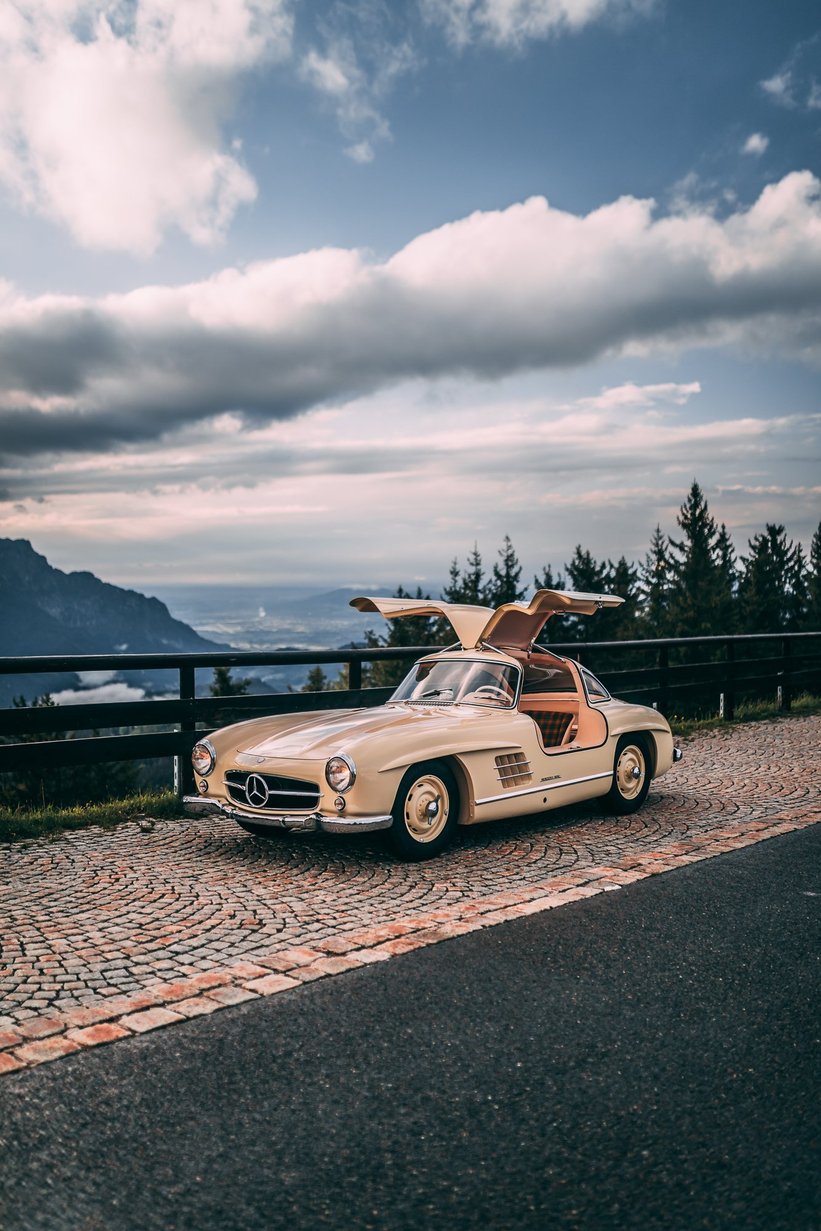
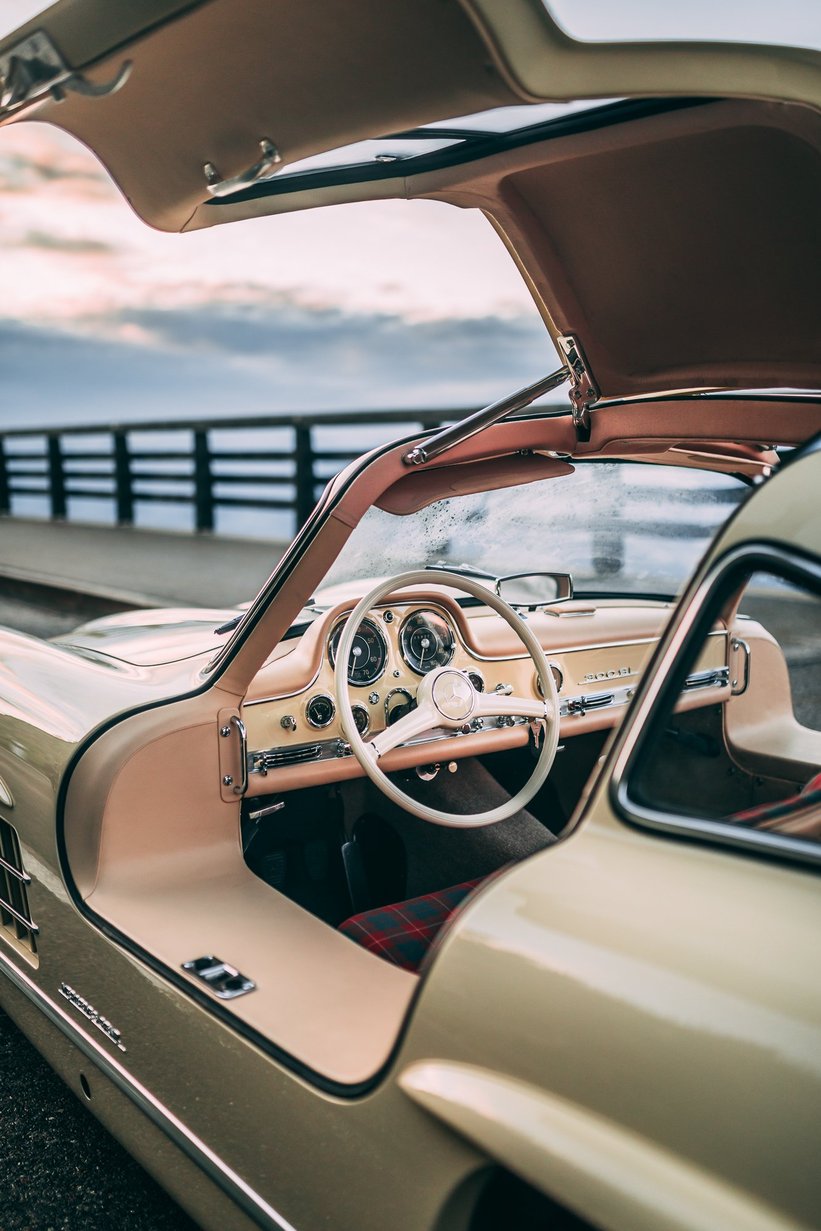
Alas, Piper’s prosthetic leg – the result of a dreadful accident on the set of Steve McQueen’s racing flick Le Mans – made it difficult for him to access the car’s slightly awkward cabin and he was forced to sell a year later in 1972. A doctor by the name of Michael Barrett was the next owner. Somewhat unluckily, Barrett’s brother managed to lightly damage the front-right headlight on delivery day (of all days!). The ‘Gullwing’ was tucked away in a barn, the idea being that Barrett would attempt to restore the car.
This is where the story diverts at an abrupt tangent. In 1982, with no progress having been made on the Mercedes, Barrett shipped the car to New Zealand along with a 300SL Roadster from 1958, supposedly to be restored. It wasn’t until the new millennium, when the vice president of the Mercedes-Benz Club Auckland Garry Boyce entered the fray, that the tale resumes. Boyce was made aware of the rare silver-starred beauties lying dormant in the Waikato area.

Despite being told emphatically that the 300SLs were not for sale, Boyce persuaded their caretaker to let him take a look. After inspecting the Roadster, an extraordinarily original example, he visited the resting place of the ‘Gullwing’, an old shipping container. Feeling like Howard Carter when he and his team discovered the tomb of Tutankhamun, Boyce felt shivers down his spine as he eyed the ultra-special lightweight Mercedes. It was in what could only be adequately described as ‘basket-case’ condition.
Following several years of trying to buy the car, each attempt having been met with a resounding ‘no!’ – plus fending off numerous European and American marque enthusiasts who, aware of these cars’ existence, had followed the grapevine to New Zealand’s shores – Boyce was finally told by Michael Barrett that he could buy the cars.



Authentic patina on a classic car, accumulated over decades of loving use, is beguiling. It tells a thousand different personal stories, sweeping you away on an imaginary journey through the decades. But a no-expense-spared ‘nut-and-bolt’ restoration is arguably even more striking, momentarily transporting you back in time and filling you with the feverish, child-like excitement and awe that must have been felt by the car’s expectant custodian on collection day.
This 300SL was treated to such a restoration, carried out by specialist Lloyd Marx in Hamilton, New Zealand. Not a single stone was left unturned in the exhaustive four-year process – particularly with regards to the precious aluminium body, which was painstakingly hammered and filed to a silky-smooth paint-like finish. “We could not have restored the car better in Germany,” reads the Mercedes-Benz Classic ‘Expertise’ book pertaining to the car’s authenticity, from the matching-numbers engine, gearbox and spaceframe chassis to the alloy body.
Upon its completion, the resplendent ‘Gullwing’ was entered in New Zealand’s Ellerslie Intermarque Concours d’Elegance in 2015, winning the prestigious Masters Class and scoring the third-highest recorded points in the competition’s 42-year history. Before the year was out, chassis #6500015 returned to London. Aware of the car’s significance as one of the 29 alloy-bodied 300SLs, the new owner charged the ‘Gullwing’ gurus at HK Engineering with elevating the car’s condition even further.
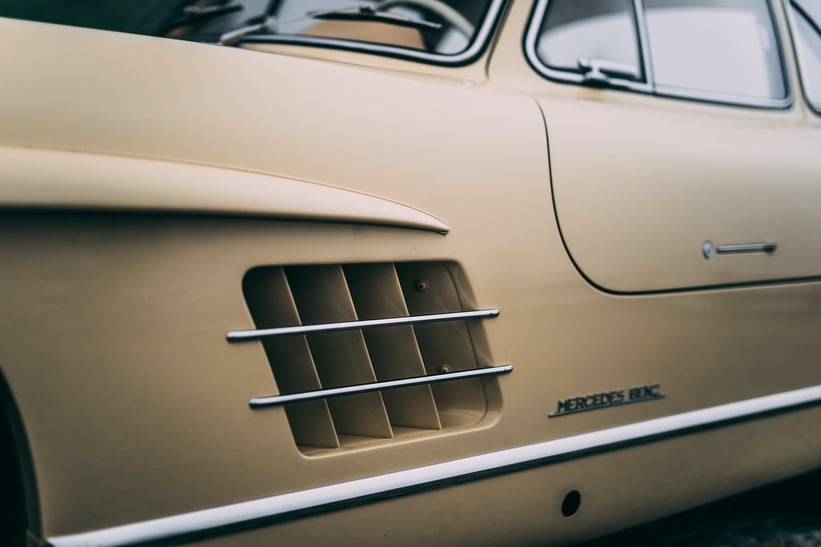

A further 1,000 hours were invested, correcting minor imperfections and reverting everything to absolutely original specification – the Nappa leather in which the cabin was reupholstered over in New Zealand, for example, was returned to period correct vinyl and the driver-side wing mirror was removed. The work was finished in time for the car to be entered in the most famous automotive beauty pageant of them all, the Pebble Beach Concours d’Elegance in California. In the fiercely contested Post-War Touring class, it won second place.
Stirling Moss’ ‘Sportabteilung’. The early ‘Gullwing’ that was entombed in a Jacksonville garage for 53 years. The car that was bought by Hollywood legend Paul Newman in 1957. The ‘palm find’ discovered beneath a banana tree in Cuba. This cyan-coloured bird of paradise.
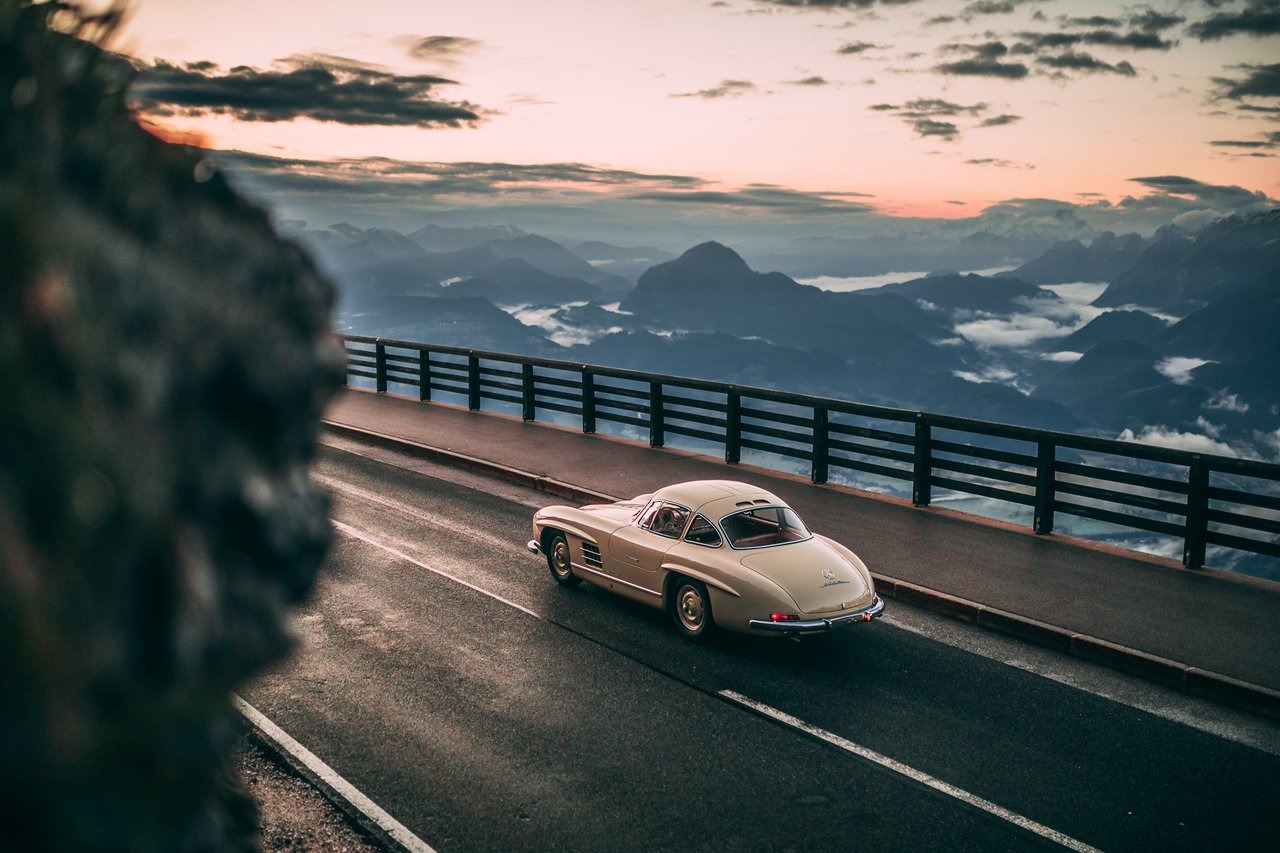
The 300SL is not an especially rare classic car – Mercedes sold 1,400 of the bewinged beauties – but, like the examples we just listed, there are those that, without doubt, stand head and shoulders above the rest. And it’s these that are of most interest to today’s increasingly discerning collectors. The unique alloy-bodied Elephant Ivory example exquisitely captured here by Stephan Bauer – and which is now being offered for sale by Schaltkulisse GmbH in Munich – is deservedly one of them.
Photos: Stephan Bauer for Schaltkulisse GmbH © 2020 / Video: OFF Films
















































